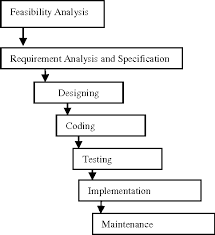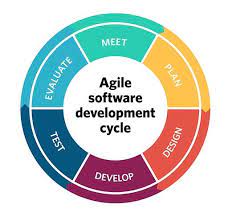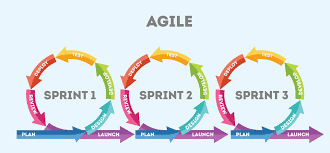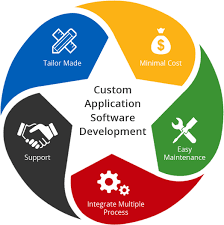Unlocking Potential: The Power of Custom Android App Development
The Power of Custom Android App Development
In today’s digital age, mobile applications have become an essential tool for businesses to engage with their customers and streamline operations. With the widespread use of Android devices, custom Android app development has emerged as a powerful solution for companies looking to create unique and tailored mobile experiences.
Benefits of Custom Android App Development
Custom Android apps offer a range of benefits that off-the-shelf solutions cannot match:
- Personalized User Experience: Custom apps can be designed to reflect your brand identity and provide a seamless user experience tailored to your target audience.
- Enhanced Functionality: Tailor-made features and functionalities can be integrated into the app to meet specific business requirements and improve operational efficiency.
- Scalability: Custom apps can grow and evolve with your business, allowing for easy scalability and adaptation to changing needs.
- Better Security: Custom apps can implement robust security measures tailored to your data protection needs, ensuring the safety of sensitive information.
- Competitive Advantage: By offering a unique app experience, you can stand out from competitors and attract more users to your brand.
The Development Process
The custom Android app development process typically involves the following stages:
- Requirement Analysis: Understanding the client’s needs, target audience, and desired features.
- Design & Prototyping: Creating wireframes and prototypes to visualize the app’s layout and functionality.
- Development: Writing code, integrating features, and testing the app for performance and usability.
- Deployment & Support: Launching the app on the Google Play Store and providing ongoing maintenance and support services.
Harnessing Innovation with Custom Android Apps
In conclusion, custom Android app development offers businesses a unique opportunity to leverage mobile technology for growth and success. By investing in a tailor-made solution that aligns with your goals and values, you can unlock new possibilities for engagement, efficiency, and innovation in today’s competitive market.
9 Essential Tips for Successful Custom Android App Development
- Clearly define the app’s purpose and target audience.
- Plan out the app’s features and functionality in detail.
- Design a user-friendly and intuitive interface.
- Optimize the app for performance and speed.
- Ensure compatibility with different Android devices and screen sizes.
- Implement robust security measures to protect user data.
- Regularly test the app for bugs and usability issues.
- Gather feedback from beta testers to improve the app before launch.
- Stay updated with Android platform updates and best practices.
Clearly define the app’s purpose and target audience.
When embarking on custom Android app development, it is crucial to clearly define the app’s purpose and target audience. By establishing a clear understanding of what the app aims to achieve and who its intended users are, developers can tailor the features, design, and functionality to meet specific needs effectively. This strategic approach not only ensures that the app resonates with its target audience but also maximizes its impact and usability, ultimately leading to a more successful and engaging mobile experience.
Plan out the app’s features and functionality in detail.
When embarking on custom Android app development, it is crucial to meticulously plan out the app’s features and functionality in detail. By carefully outlining the desired features and functionalities of the app, developers can ensure that the final product aligns perfectly with the client’s needs and expectations. This planning phase lays the foundation for a successful development process, enabling a clear roadmap for implementation and ensuring that the app meets all requirements effectively. A thorough consideration of features and functionality upfront can streamline development, enhance user experience, and ultimately lead to a high-quality custom Android app that resonates with users.
Design a user-friendly and intuitive interface.
When focusing on custom Android app development, it is crucial to prioritize the design of a user-friendly and intuitive interface. A well-crafted interface enhances the overall user experience, making navigation seamless and interactions intuitive. By designing with the end user in mind, incorporating clear layouts, easy-to-understand icons, and logical workflows, you can ensure that your app not only looks visually appealing but also functions effectively, ultimately leading to higher user satisfaction and engagement.
Optimize the app for performance and speed.
To ensure the success of a custom Android app, it is crucial to optimize the application for performance and speed. By focusing on enhancing the app’s efficiency and responsiveness, developers can provide users with a seamless and enjoyable experience. Optimizing performance involves fine-tuning various aspects of the app, such as minimizing loading times, reducing memory usage, and optimizing code for faster execution. Prioritizing speed not only enhances user satisfaction but also contributes to increased user retention and overall app success in a competitive market.
Ensure compatibility with different Android devices and screen sizes.
To ensure the success of a custom Android app development project, it is crucial to prioritize compatibility with various Android devices and screen sizes. By optimizing the app to function seamlessly across a range of devices, including smartphones and tablets with different screen resolutions, developers can enhance user experience and reach a broader audience. This attention to compatibility not only improves usability but also reflects a commitment to delivering a consistent and reliable experience for all users, regardless of the device they use.
Implement robust security measures to protect user data.
It is crucial to implement robust security measures in custom Android app development to safeguard user data. By prioritizing data protection, businesses can build trust with their users and ensure the confidentiality and integrity of sensitive information. Incorporating encryption, secure authentication protocols, and regular security updates can help mitigate risks and prevent unauthorized access to user data, enhancing the overall security posture of the app. Prioritizing user privacy and security not only aligns with regulatory requirements but also demonstrates a commitment to delivering a safe and reliable mobile experience for all users.
Regularly test the app for bugs and usability issues.
Regularly testing the custom Android app for bugs and usability issues is crucial to ensure a smooth user experience and optimal performance. By conducting thorough testing throughout the development process, developers can identify and address any issues promptly, leading to a more reliable and user-friendly application. Continuous testing helps in detecting bugs early on, improving overall app quality, and enhancing customer satisfaction. Prioritizing regular testing not only enhances the app’s functionality but also contributes to its long-term success in the competitive mobile app market.
Gather feedback from beta testers to improve the app before launch.
Gathering feedback from beta testers is a crucial step in custom Android app development to ensure a successful launch. By involving real users in the testing phase, developers can identify potential issues, gather valuable insights, and make necessary improvements to enhance the app’s functionality and user experience. This iterative process of collecting feedback helps in addressing any bugs or usability concerns before the official release, ultimately leading to a more polished and well-received app among the target audience.
Stay updated with Android platform updates and best practices.
To ensure the success of custom Android app development, it is crucial to stay updated with Android platform updates and best practices. By keeping abreast of the latest advancements in the Android ecosystem, developers can leverage new features, optimize performance, and enhance user experience. Adhering to best practices not only ensures compatibility with the latest Android versions but also helps in maintaining security standards and delivering high-quality apps that meet user expectations. Continuous learning and adaptation to industry trends play a key role in creating innovative and competitive custom Android applications.












